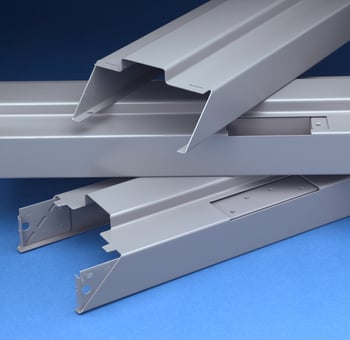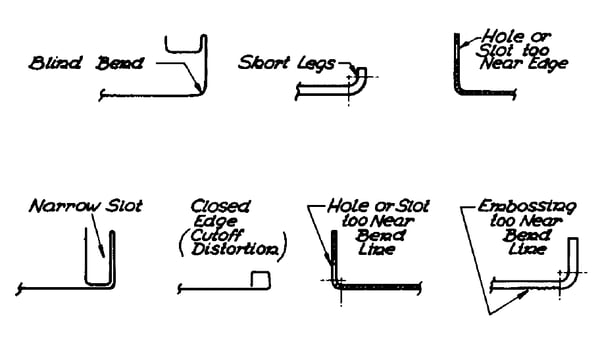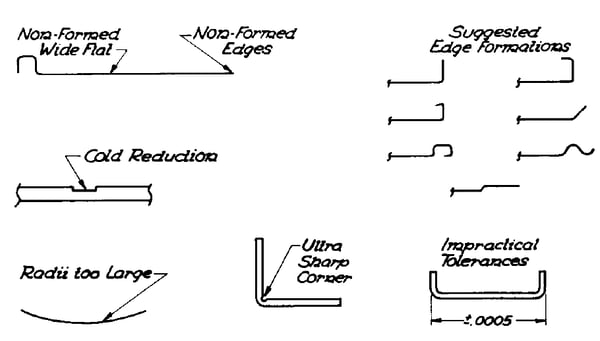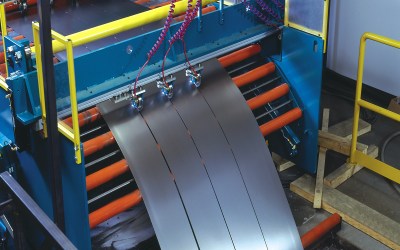 Roll forming may sound like the “Answer to a Maiden’s Prayer” but it, like every other manufacturing process has some limitations, drawbacks, and restrictions that must be observed in both machine operation and section design to provide a satisfactory application. In this post, we'll discuss the shapes and design limitations in roll forming operations.
Roll forming may sound like the “Answer to a Maiden’s Prayer” but it, like every other manufacturing process has some limitations, drawbacks, and restrictions that must be observed in both machine operation and section design to provide a satisfactory application. In this post, we'll discuss the shapes and design limitations in roll forming operations.
Roll Forming Design Restrictions
For the most part, end product design dictates shape configuration, but at the same time familiarity with the processing limitations goes a long way toward designing for manufacturing simplicity and thereby successful, continuous production of uniform piece parts. Some restrictions that should be considered include:
- Blind bends for example, bends that cannot be reached by both a male and female portion of a pair of driven rolls can be difficult to control.
- Narrow slots require narrow rolls that present heat treating problems and are subject to breakage particularly when excessive metal thickness variations are encountered.
- Flange lengths - the length of metal beyond the radius tangent point - should be at least three times metal thickness.
- Modern installations often include piercing, notching, embossing and other operations either before or after the rolling operation. Prepunched holes and notches should be kept away from bend lines or edges and consideration should be given to the possibility of slight distortion in their size and shape during forming. Obviously too, rolls must be relieved to clear any embossed designs; therefore, embossing should also be kept clear of bend lines for most effective forming.
- The press type cutoff machine, whether mechanical, hydraulic or pneumatic, because of its speed and accuracy, is the most popular type of cutoff used today with roll forming lines. If at all possible the shape should be designed so the cutoff die can be constructed to develop minimum distortion of the cut end or, it this is impractical then the product assembly should compensate accordingly.

- Sections with wide flat areas that are exposed when assembled into the end product should be viewed with caution. Despite advances in coil metal processing, no one has made a perfectly flat coil of material. Imperfections such as “loose edges” or “loose center” (oil canning) tend to accentuate into such areas. Longitudinal ribs, perhaps ¼” high minimum, added on about 6” centers across the width are effective as a compensating measure.
- Sections with a wide flat surface along one edge can be improved with some edge formation to remove the “ripples” that otherwise might be produced. Cold reduction and cold roll forming are not completely compatible, however, a limited amount can be accomplished. Metal thickness reductions create control problems as the thickness and hardness of the strip varies.
- Corner radii, control the amount of spring-back; if too large, the shape will not be held uniformly as metal hardness varies; if too small, the result might be objectionable pressure marks or the likelihood of metal fracture or cracking in the bend areas.
- The minimum bend radius is largely determined by the ductility of the metal. It is however, a fact that sharper radii can be obtained by roll forming than by other methods. Given a metal of sufficient ductility, absolute sharp corners can be developed by creasing or actually reducing the metal thickness before forming up the corner. Although this is
performed when required, it is not a suggested design mainly because of the limited life of the creasing roll and the fact the section is weakened by the reduction in area.
The various metal handbooks provide information giving bend properties of specific materials. It is advisable to adhere to these restrictions and to those imposed by metal temper in all cases, noting that forming sharp corner involve added machine loads and may accelerate tool maintenance.



